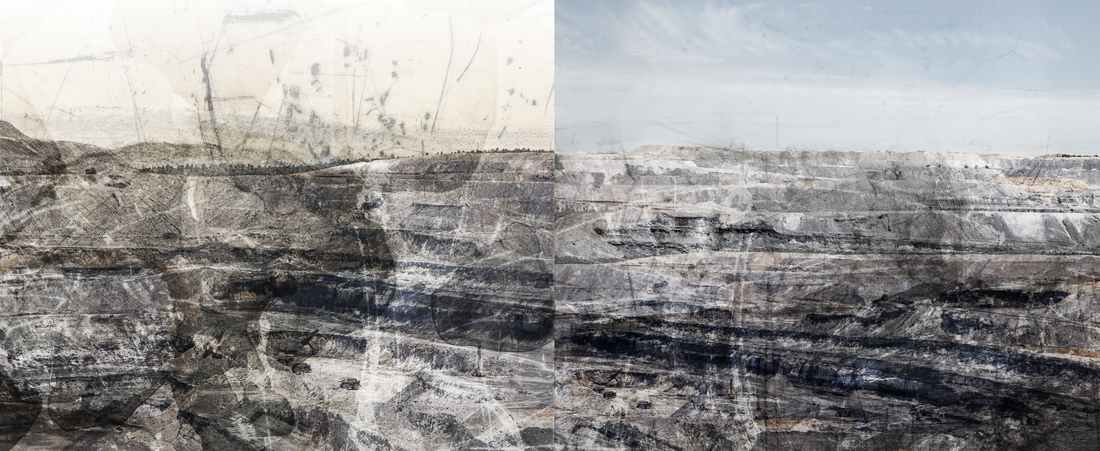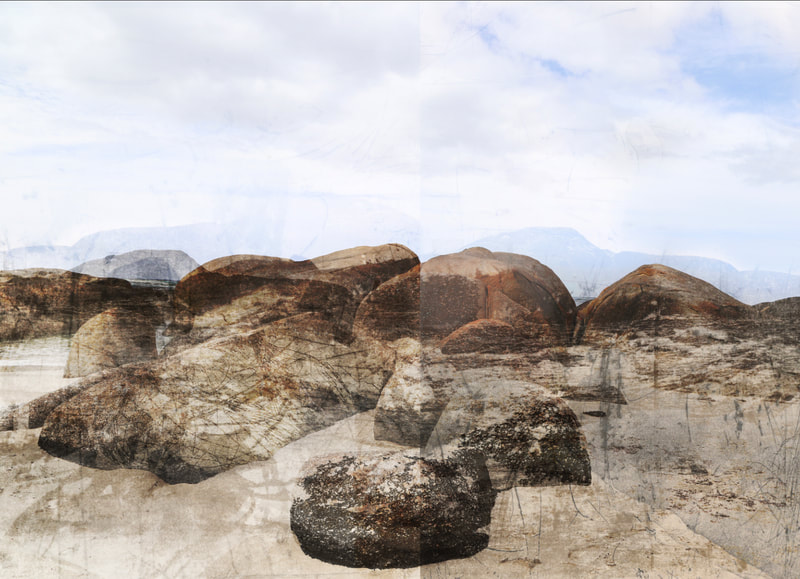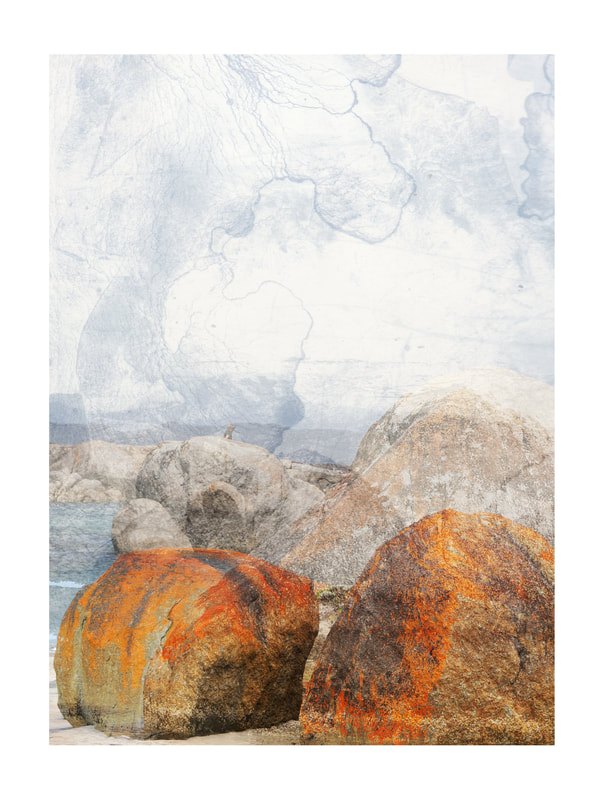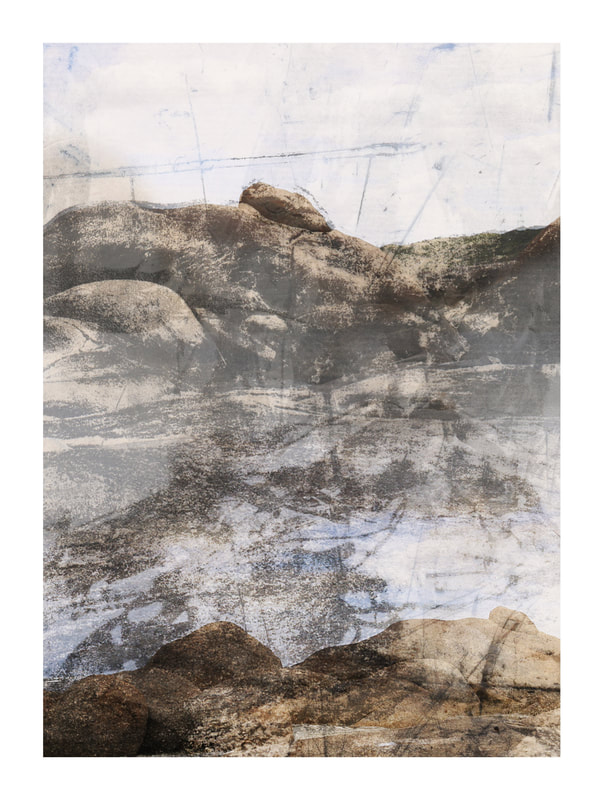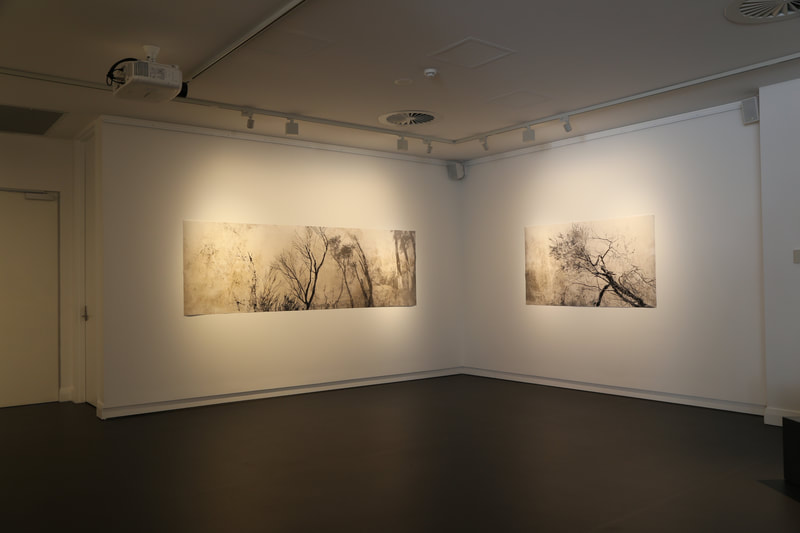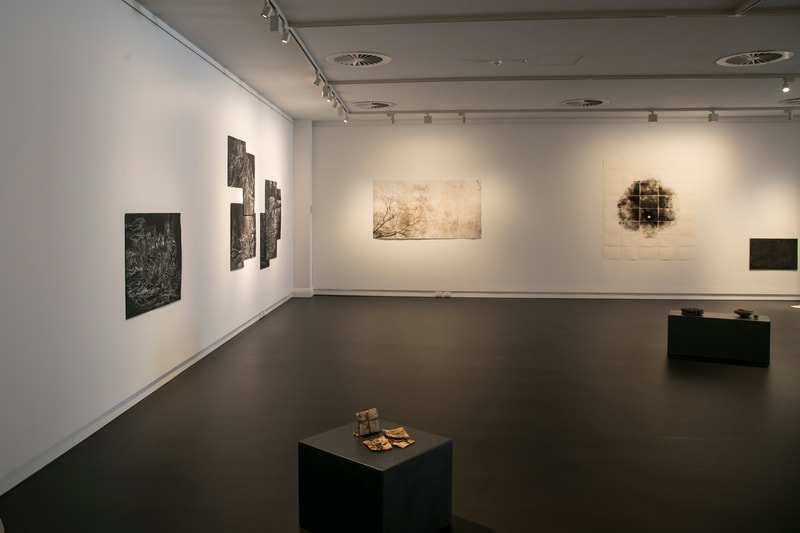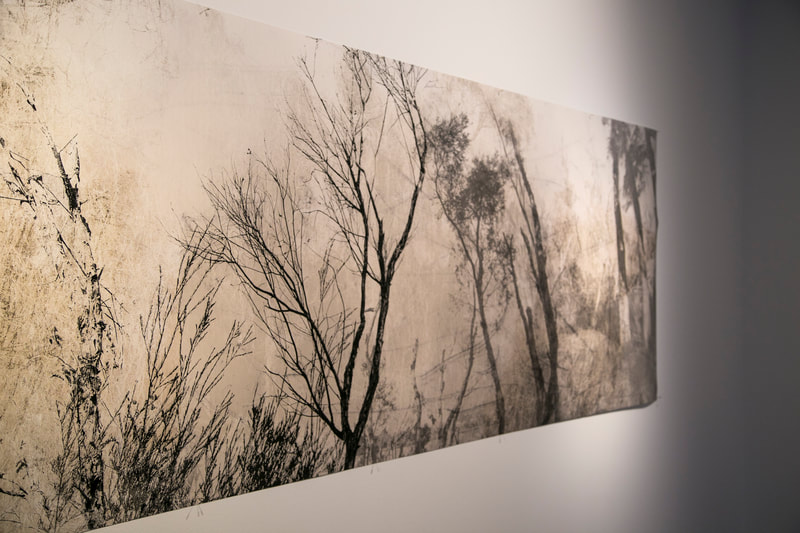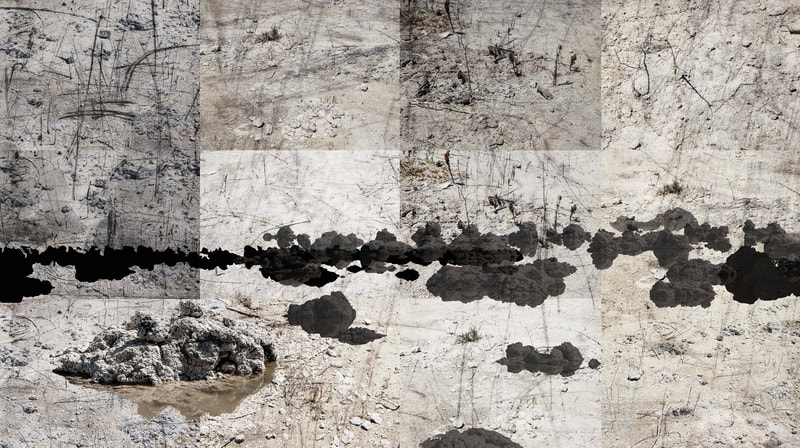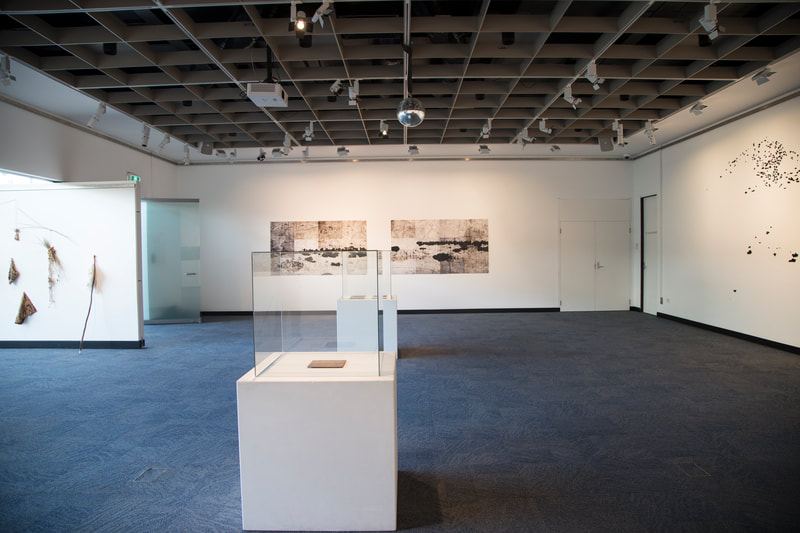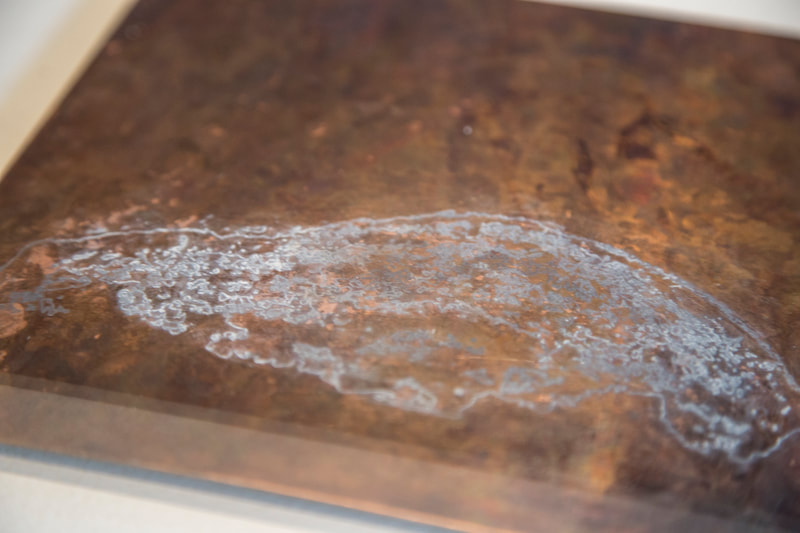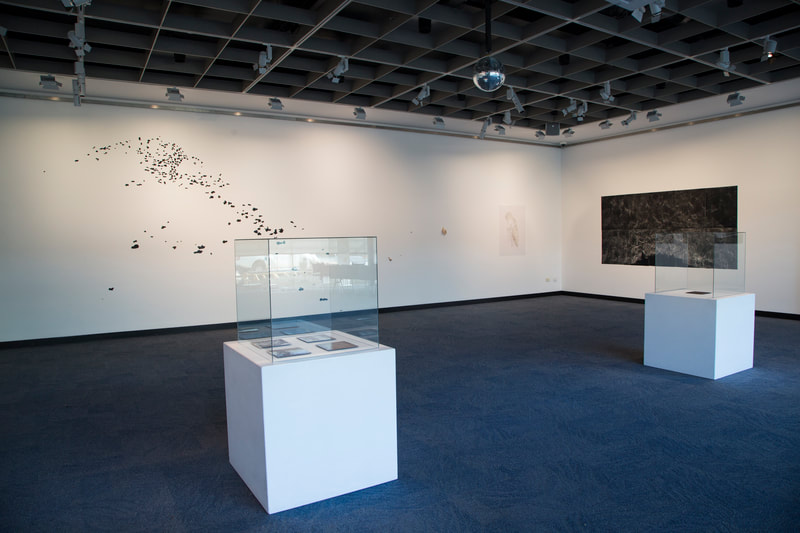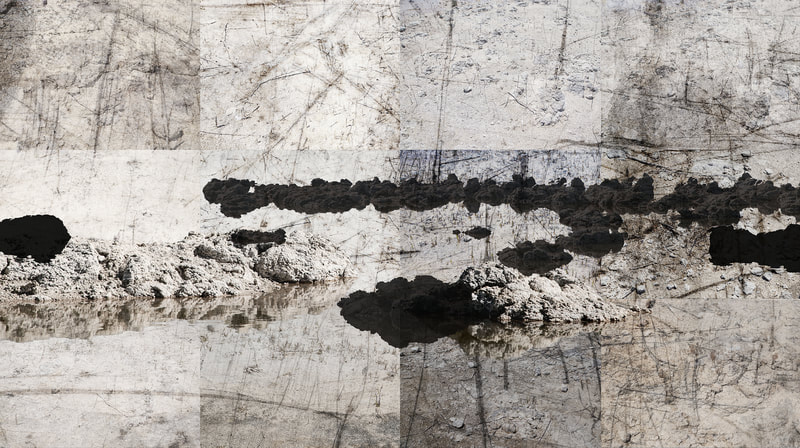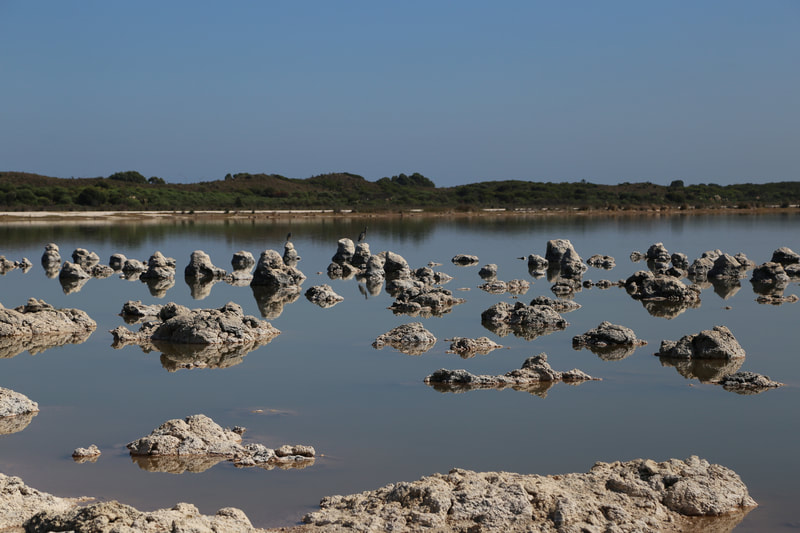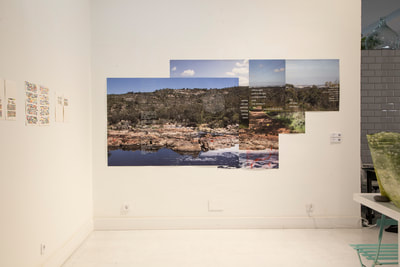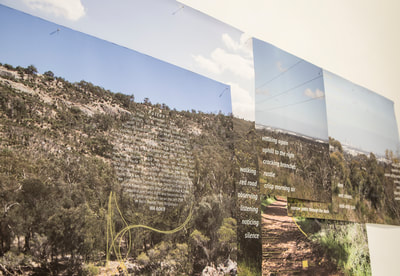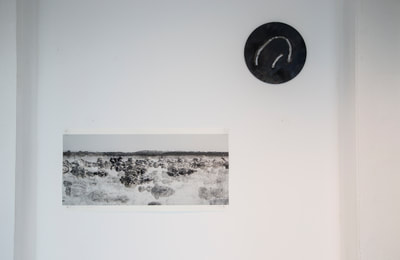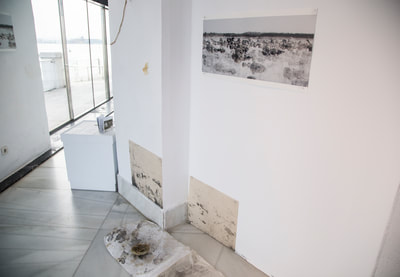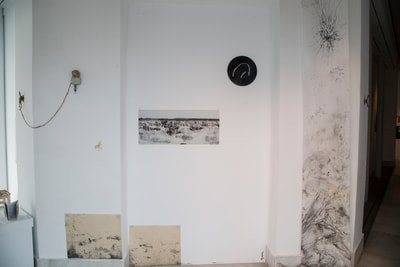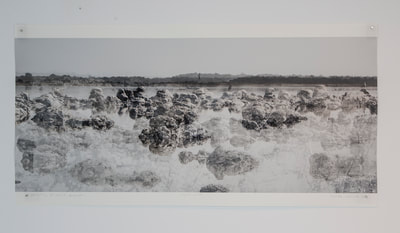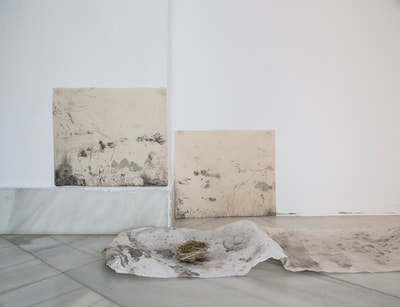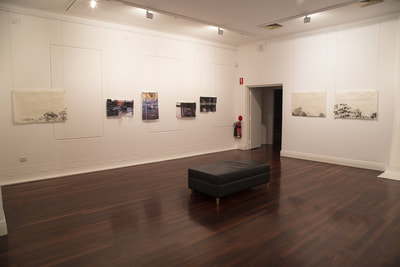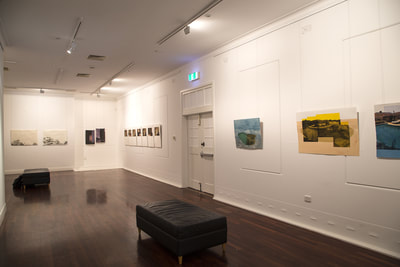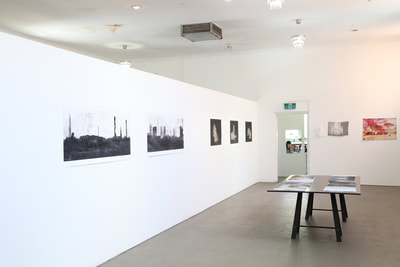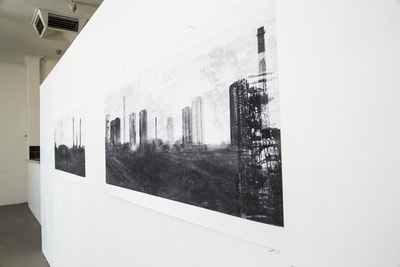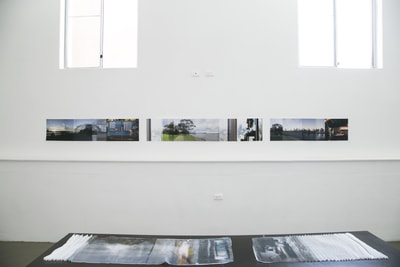TRANSMEDIAL: AI in Print (2024)
Monika Lukowska & Sarah Robinson
The work draws its premise from a seminal conceptual exhibition, ‘Art By Telephone’ (1969),4 at The Museum of Contemporary Art, Chicago, where participating artists instructed the gallery curator on how he and the gallery staff should make their artwork. As printmakers our knowledge of the world as living, breathing beings shapes how we artistically collaborate to experiment with printmaking in a ‘manner that preserves and enhances human creativity rather than overshadowing it.’ REF
In challenging traditional art making, Laszlo Moholy-Nagy ‘…emphasized the role of the modern artist as a producer of concepts rather than a craftsman physically involved in the making of the work.’2 This remark still holds its relevance in the age where images are increasingly created from impartial instructions by artists-yet generated by machines-highlighting our reliance on emerging smart technologies.
We returned to the original ABT show's premise, exploring a collaborative aspect of art creation and the interaction between artists and technology. ChatGPT was used to select artist John Baldessari from the original MCA exhibition; instructions from his original recording 8 were inputted into DALL•E 2, creating new images including some that could easily be mistaken for a contemporary hi-tech media installation. Indeed, by using AI as a tool, AI can offer conceptual expansion in creative practice, as it is fair to say that keeping a 'human-in-the-AI-loop' offers contemporary printmakers the best tactic to preserve their traditional printmaking skills.
A repurposed 1960-70s UK telephone for Transmedial: AI in Print, 2024 pays homage to the original 1969 Art By Telephone show. Our audience is invited to leave a recorded three-word message to describe what printmaking is to them. These three words will instruct AI to create new images to capture a contemporary outlook on the field of printmaking. The aim of using audience-directed images is to create an impossible manual of printmaking designed for a future of nonsensical printmaking. This manual gives insights into an unfortunate imagined future direction in contemporary printmaking: a future moving away from the human touch, traditional skills, and creatively responsive actions.
https://www.printcouncil.org.au/transmedial-ai-in-print/
Monika Lukowska & Sarah Robinson
The work draws its premise from a seminal conceptual exhibition, ‘Art By Telephone’ (1969),4 at The Museum of Contemporary Art, Chicago, where participating artists instructed the gallery curator on how he and the gallery staff should make their artwork. As printmakers our knowledge of the world as living, breathing beings shapes how we artistically collaborate to experiment with printmaking in a ‘manner that preserves and enhances human creativity rather than overshadowing it.’ REF
In challenging traditional art making, Laszlo Moholy-Nagy ‘…emphasized the role of the modern artist as a producer of concepts rather than a craftsman physically involved in the making of the work.’2 This remark still holds its relevance in the age where images are increasingly created from impartial instructions by artists-yet generated by machines-highlighting our reliance on emerging smart technologies.
We returned to the original ABT show's premise, exploring a collaborative aspect of art creation and the interaction between artists and technology. ChatGPT was used to select artist John Baldessari from the original MCA exhibition; instructions from his original recording 8 were inputted into DALL•E 2, creating new images including some that could easily be mistaken for a contemporary hi-tech media installation. Indeed, by using AI as a tool, AI can offer conceptual expansion in creative practice, as it is fair to say that keeping a 'human-in-the-AI-loop' offers contemporary printmakers the best tactic to preserve their traditional printmaking skills.
A repurposed 1960-70s UK telephone for Transmedial: AI in Print, 2024 pays homage to the original 1969 Art By Telephone show. Our audience is invited to leave a recorded three-word message to describe what printmaking is to them. These three words will instruct AI to create new images to capture a contemporary outlook on the field of printmaking. The aim of using audience-directed images is to create an impossible manual of printmaking designed for a future of nonsensical printmaking. This manual gives insights into an unfortunate imagined future direction in contemporary printmaking: a future moving away from the human touch, traditional skills, and creatively responsive actions.
https://www.printcouncil.org.au/transmedial-ai-in-print/
Seven Forms (2022)
Seven artists observe layers of meaning attached to sites and artifacts encountered in the Collie region. They notice the mapping and movement of land, water and fauna as cultural formations echoed in processes of alteration in their own printmaking, drawing, and shaping of clay. Aware of being visitors to Collie and Noongar Country, the Perth-based artists reflect on landscapes as sites of flux (mining sites, riverscapes, lakes) rather than as fixed and static places. All the while however, the ghosts of memory and recollection remain as traces, lines and folds in the land mirrored in their artforms. Seven Forms offers viewers an altered way of seeing familiar places and things. The artists create work inspired by Collie while bringing to the task their ability to produce material formations that connect industrial culture and the physical world. This is done in ways that resonate with concern at environmental disruption and optimism at opportunity for change.
Artists: Susanna Castleden, Monika Lukowska, Melanie McKee, Alana McVeigh, Layli Rakhsha, Sarah Robinson and Sue Starcken.
http://www.sevenforms.org/
Seven artists observe layers of meaning attached to sites and artifacts encountered in the Collie region. They notice the mapping and movement of land, water and fauna as cultural formations echoed in processes of alteration in their own printmaking, drawing, and shaping of clay. Aware of being visitors to Collie and Noongar Country, the Perth-based artists reflect on landscapes as sites of flux (mining sites, riverscapes, lakes) rather than as fixed and static places. All the while however, the ghosts of memory and recollection remain as traces, lines and folds in the land mirrored in their artforms. Seven Forms offers viewers an altered way of seeing familiar places and things. The artists create work inspired by Collie while bringing to the task their ability to produce material formations that connect industrial culture and the physical world. This is done in ways that resonate with concern at environmental disruption and optimism at opportunity for change.
Artists: Susanna Castleden, Monika Lukowska, Melanie McKee, Alana McVeigh, Layli Rakhsha, Sarah Robinson and Sue Starcken.
http://www.sevenforms.org/
Tracing Gondawana (2022)
Tracing Gondwana celebrates the ancient landscapes of the Great Southern – one of the richest Biodiversity Hotspots on the planet. A creative collaboration between printmakers Nikki Green, Monika Lukowska and writer Reneé Pettitt-Schipp, has resulted in a body of work responding to the current climate emergency. Weaving words and image through printmaking processes, Tracing Gondwana evokes a personal sense of hope amidst an extremely vulnerable and threatened ecological time.
Tracing Gondwana celebrates the ancient landscapes of the Great Southern – one of the richest Biodiversity Hotspots on the planet. A creative collaboration between printmakers Nikki Green, Monika Lukowska and writer Reneé Pettitt-Schipp, has resulted in a body of work responding to the current climate emergency. Weaving words and image through printmaking processes, Tracing Gondwana evokes a personal sense of hope amidst an extremely vulnerable and threatened ecological time.
Talking Place: Emerging Connections (2020)
Talking Place: Emerging Connections is the third iteration of a collaborative research project by four artists Monika Lukowska, Annette Nykiel, Sarah Robinson and Jane Whelan exploring the ecology of Perth’s wetlands in the broader realms of place, technology and contemporary art practice. This project began in 2017, within the thresholds of Lake Walyungup, Western Australia, a seemingly empty space amid growing urban communities with a deep history embedded in thrombolites remains and Noongar traditions. Discursive responses articulate the artists’ experiences, conveying the complexities of a place and emerging as a multidisciplinary exhibition involving printmaking, drawing, slow-making, and digital technology. They endeavour to explore, to connect and to extend imaginatively and collaboratively with the materiality of ideas pondering: what new terrain might emerge from asking questions and creating problems while creatively investigating place. During engagement in the field, exchange and conversation, the artists unravelled layers, hidden narratives, and spatial dimensions emphasising the complex nature of wetlands and their significance in the local and global context. Links emerged connecting the initial site with other local, national and international wetlands through themes that consider what it means to be in this world; including both connection and disruption, and thinking and sensing through the ideas of phenomenologists Maurice Merleau-Ponty and Edward Casey, anthropologist Tim Ingold, and design anthropologist Sarah Pink. They have detected individual, alternative views of the environment and updated their views in this conversation about ways of knowing.
Talking Place: Emerging Connections is the third iteration of a collaborative research project by four artists Monika Lukowska, Annette Nykiel, Sarah Robinson and Jane Whelan exploring the ecology of Perth’s wetlands in the broader realms of place, technology and contemporary art practice. This project began in 2017, within the thresholds of Lake Walyungup, Western Australia, a seemingly empty space amid growing urban communities with a deep history embedded in thrombolites remains and Noongar traditions. Discursive responses articulate the artists’ experiences, conveying the complexities of a place and emerging as a multidisciplinary exhibition involving printmaking, drawing, slow-making, and digital technology. They endeavour to explore, to connect and to extend imaginatively and collaboratively with the materiality of ideas pondering: what new terrain might emerge from asking questions and creating problems while creatively investigating place. During engagement in the field, exchange and conversation, the artists unravelled layers, hidden narratives, and spatial dimensions emphasising the complex nature of wetlands and their significance in the local and global context. Links emerged connecting the initial site with other local, national and international wetlands through themes that consider what it means to be in this world; including both connection and disruption, and thinking and sensing through the ideas of phenomenologists Maurice Merleau-Ponty and Edward Casey, anthropologist Tim Ingold, and design anthropologist Sarah Pink. They have detected individual, alternative views of the environment and updated their views in this conversation about ways of knowing.
| |||
Talking Place: Unfolding Conversations (2019) is a collaborative exhibition between Tracy Hill, Monika Lukowska, Annette Nykiel, Sarah Robinson, Jane Whelan, and sound artist Ryan Burge that explores the significance of wetlands with particular focus on Lake Walyungup; a shallow, ephemeral salt-lake in the Rockingham area known by the local Noongar people as ‘the place where people talk’. Lake Walyungup is a seemingly forgotten, empty space in the midst of a growing urban community which offers shelter to migratory birds and wildlife. It has a deep history embedded in thrombolite remains, links with the Noongar community and various historical uses by the passing groups of settlers and armed forces.
| talking_place_exhibition_catalogue.pdf |
Convergence
Monika Lukowska & Melanie McKee
Exhibition during IMPACT 10 International Printmaking Conference, La Central, Santader, Spain, September 2018
Exhibition
Monika Lukowska & Melanie McKee
Exhibition during IMPACT 10 International Printmaking Conference, La Central, Santader, Spain, September 2018
Exhibition
| convergence_essay.docx |
Talking place
Monika Lukowska, Sarah Robinson, Annette Nykiel, Jane Whelan
Exhibition during IMPACT 10 International Printmaking Conference, Palacete del Embarcadero, Santader, Spain, September 2018
A collaborative project involving the experience of four artists ‘encountering’ a previously unvisited space; Lake Walyungup, Western Australia (32.3411° S, 115.7782° E) - which was know by the local indigenous Nyoongar people as ‘the place where people talk’. It is a shallow, ephemeral salt-lake which, on that first visit, shimmered as a mirage in the heat of summer. Using our engagement with landscape as the matrix, we have responded individually as interdisciplinary artists to this place in the language of our own practice; which include the earth sciences, drawing, lithography, digital printmaking, screenprinting, and etching.
Monika Lukowska, Sarah Robinson, Annette Nykiel, Jane Whelan
Exhibition during IMPACT 10 International Printmaking Conference, Palacete del Embarcadero, Santader, Spain, September 2018
A collaborative project involving the experience of four artists ‘encountering’ a previously unvisited space; Lake Walyungup, Western Australia (32.3411° S, 115.7782° E) - which was know by the local indigenous Nyoongar people as ‘the place where people talk’. It is a shallow, ephemeral salt-lake which, on that first visit, shimmered as a mirage in the heat of summer. Using our engagement with landscape as the matrix, we have responded individually as interdisciplinary artists to this place in the language of our own practice; which include the earth sciences, drawing, lithography, digital printmaking, screenprinting, and etching.
|
|
Locale
Exhibition showcasing artworks by seven Western Australian printmakers, curated by Monika Lukowska and Melanie McKee.
Heathcote Museum & Gallery, Perth, Australia,
May 2017
Interview on IMPRINT blog:
imprint.org.au/printmaking/qa-melanie-mckee/
Catalogue essay and exhibition documentation:
www.heathcotewa.com/locale
Exhibition showcasing artworks by seven Western Australian printmakers, curated by Monika Lukowska and Melanie McKee.
Heathcote Museum & Gallery, Perth, Australia,
May 2017
Interview on IMPRINT blog:
imprint.org.au/printmaking/qa-melanie-mckee/
Catalogue essay and exhibition documentation:
www.heathcotewa.com/locale
TERMINUS in search of an (im)possible conclusion
A joint exhibition of recent works by Monika Lukowska and Melanie McKee
Paper Mountain Gallery, Perth, Australia
October 2016
imprint.org.au/pca-announcements/terminus-in-search-of-an-impossible-conclusion/
A joint exhibition of recent works by Monika Lukowska and Melanie McKee
Paper Mountain Gallery, Perth, Australia
October 2016
imprint.org.au/pca-announcements/terminus-in-search-of-an-impossible-conclusion/
| terminus-catalogue-1-160921.pdf |


